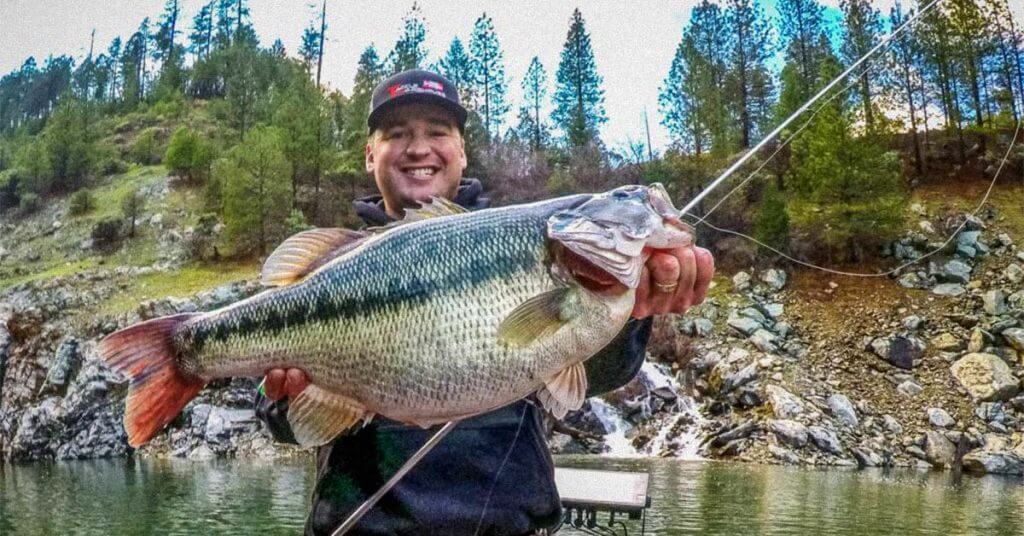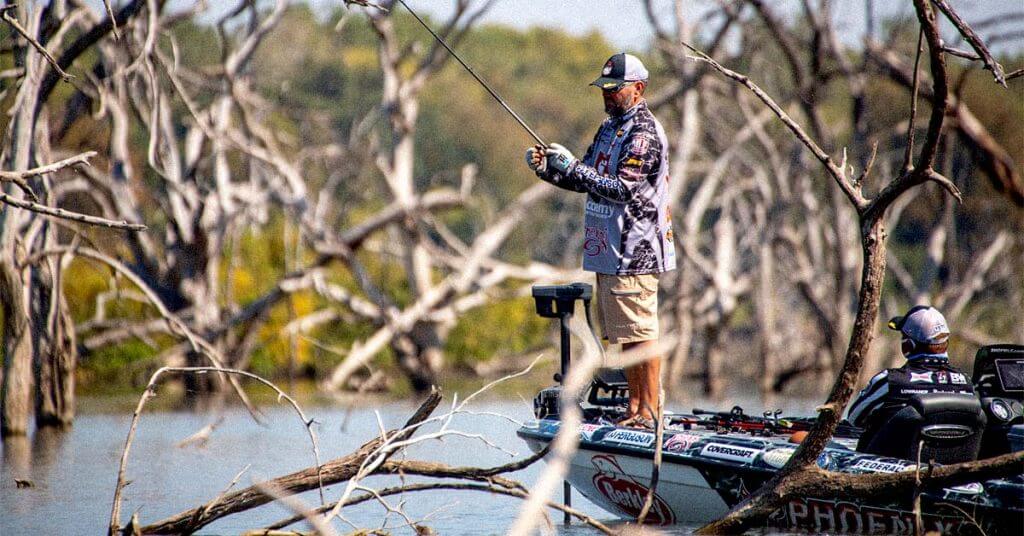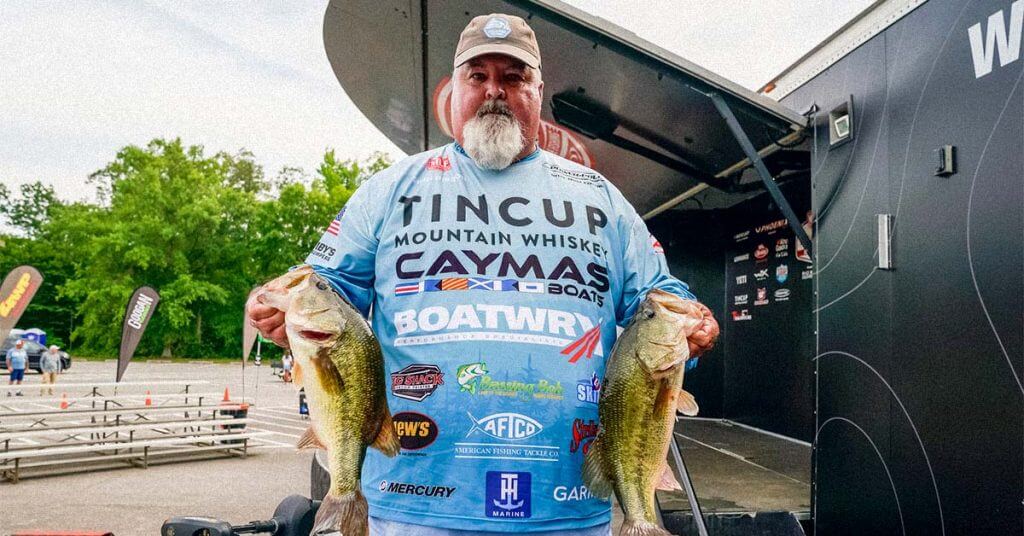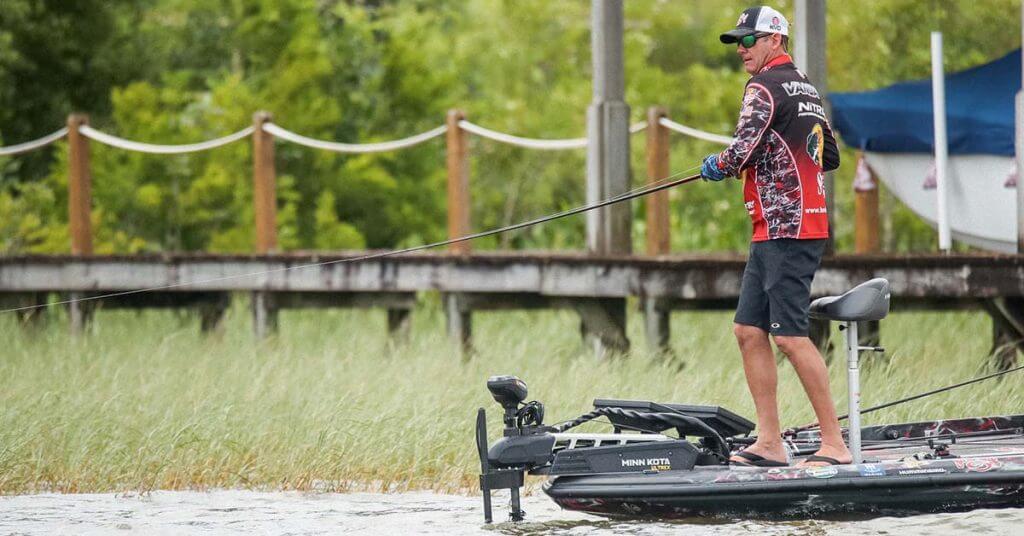When Dean Rojas pulls his boat into a cove and hears baritone bullfrogs croaking, he knows he’s in the right place for his favorite type of bass fishing.
Rojas, a longtime pro from Lake Havasu, Ariz., relishes the moments when he can work the topwater frog he designed across matted vegetation, lily pads and slop to draw a big bass out of hiding.
“There’s nothing like the explosive strike of a bass breaking through the vegetation to hit a frog,” Rojas said. “For me, that’s the ultimate.”
On Major League Fishing’s Bass Pro Tour, Rojas has to fish a variety of ways – everything from flipping and pitching to using forward-facing sonar to target open-water fish.
But given his choice, he would throw the SPRO Bronzeye Frog he designed most of the time. He has used that lure to win tens of thousands of dollars in fishing’s big time.
And he has popularized “frogging” to the point where it’s now an accepted technique, both in the pros and for average fishermen who are just looking for a topwater option in weed-choked spots.
“When I first started using a frog, I realized no one else was fishing this way,” Rojas said. “I was able to fish behind guys and give the bass something they hadn’t seen before.
“Now it’s not as easy. A lot of companies make frogs and most of the guys on the tour have a frog in their arsenal.
“But I still think the SPRO Bronzeye Frog we came up with is the best. I still catch big bass on that bait.”
You can, too. Follow Rojas’ tips on fishing everything from the slop to heavy brush and you might land that bass of a lifetime.
Table of Contents
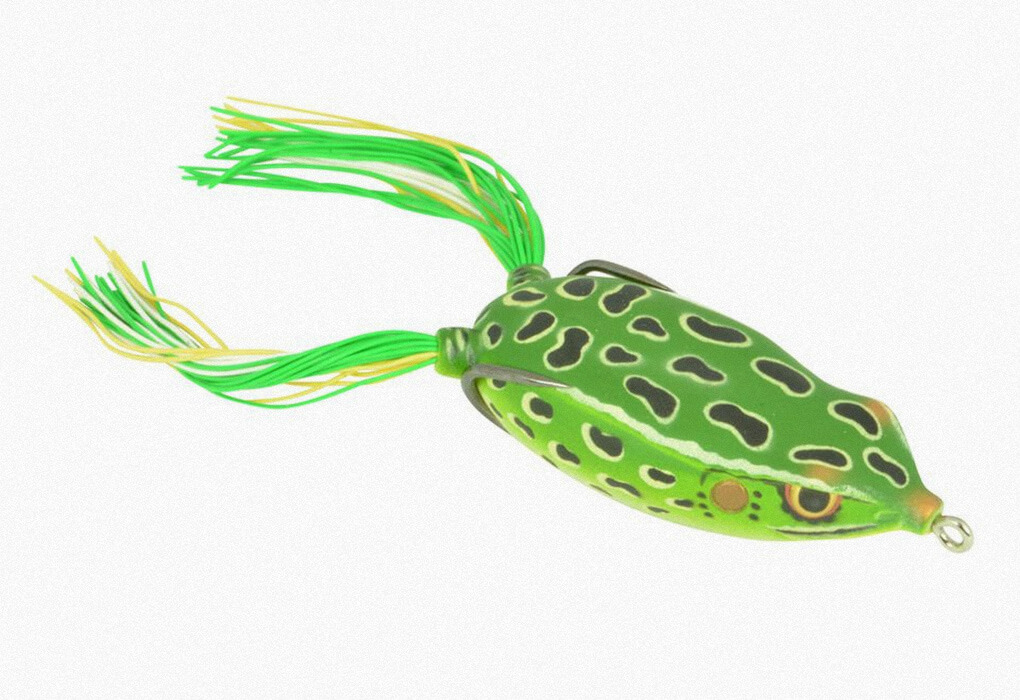
The SPRO Dean Rojas Bronzeye Frog
The Basics
So, what makes a topwater frog so effective?
First, big bass view frogs leisurely swimming through the weeds or sitting on a lily pad as an easy meal.
The matted vegetation on top might look impenetrable, but it’s what beneath the surface that counts, Rojyas said.
“Even though the grass is matted on top, a lot of times there is open water under that,” he said. “The surface vegetation is just a canopy. There is shade underneath, and a lot of food.
“Sometimes, there is enough open water for a bass to track that bait. Other times, they’ll ambush it when it comes by.”
Ideal situations include coves or backwater areas where the weeds are just under the surface, weedy areas with pockets of open water and even thick brush.
“When most people think of frog fishing, they think of nasty matted grass or slop on the surface,” Rojas said. “But that’s not even half of it.
“I’ll use frogs in buck brush, in pencil reeds and tulles and even where fish are schooling on the surface,” Rojas said.
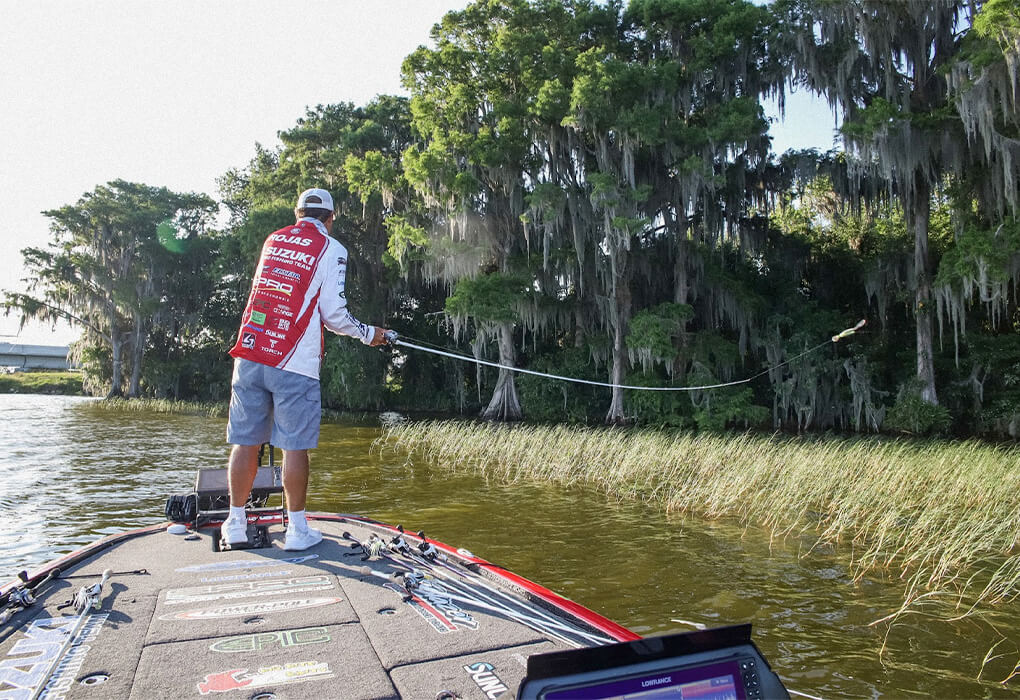
A familiar sight on the Bass Pro Tour: Dean Rojas launches a frog attack along a weed line (photo by Phoenix Moore/Major League Fishing)
Designing a Winner
In the overall scheme of things, frog fishing is still in its infancy.
“When I was getting started in tournament fishing, the frogs weren’t very good,” Rojas said. “They had a very low hookup rate, and I hardly used them.”
That all changed when Rojas accompanied a friend, who was proficient at using those topwater baits.
“He skipped that frog under docks and overhanging trees and over heavy vegetation, and he caught some big bass,” Rojas said. “It really opened my eyes.”
After finding success on the BASS circuit with the frogs, he set out to design his own bait for SPRO, USA. He wanted a bait with a strong, sharp hook, a body that he could cast long distances and an overall package that was effective in both thick vegetation and open water.
It took him 15 months to come up with a lure he was satisfied with, and SPRO launched the Dean Rojas 65 Bronzeye Frog in 2006.
It became an immediate hit, and it still is. SPRO continues to update the bait with new colors and sizes, but it still is pretty much the same bait as when Rojas developed it.
“When I designed the Bronzeye Frog, I wanted to dispel all the myths about frogs having a low hookup rate,” he said. “The hook was the nucleus of it all.
“Instead of building a lure and attaching a hook, I wanted to start with a good Gamakatsu hook, and design a bait around it. It worked out great.”
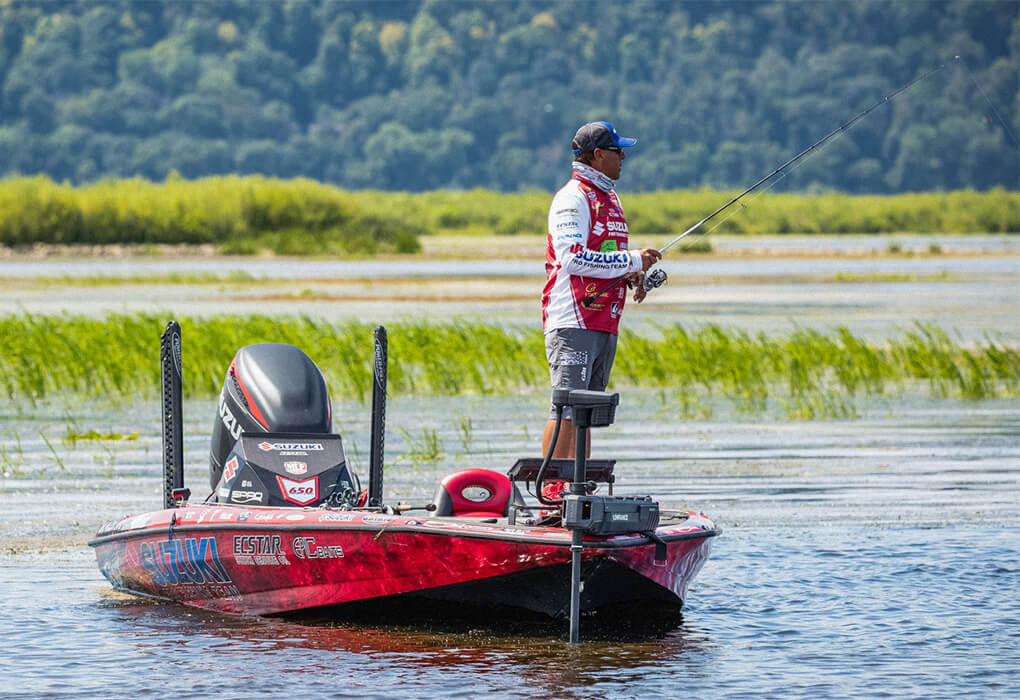
Dean Rojas likes to fish in heavy vegetation when he is working a topwater frog (photo by Cobe Pellerito/Major League Fishing)
A Bass to Remember
Rojas has caught many trophy bass on his topwater frog. But none was more memorable than the 9-pounds-plus largemouth he landed at Grand Lake during a practice day for a BASS tournament.
“It was the first week of June and the water was high,” Rojas recalled. “I was working my frog back in this shallow area and a fish came up and just sucked it in.
“I thought it was a carp at first, the way it was acting. I nonchalantly set the hook, then it came up and I could see it was a bass. Just as that happened, a boat came by and I didn’t want to have that guy see what I was doing.
“I just hit freespool and let that fish swim. I acted like I was getting another rod out of my locker until the boat passed. That fish was swimming out to the main channel with my frog in its mouth.
“I engaged my reel once that boat left and that bass fought like crazy. But I got it in, weighed it, then released it.”
The fisherman in that other boat? The legendary Rick Clunn.
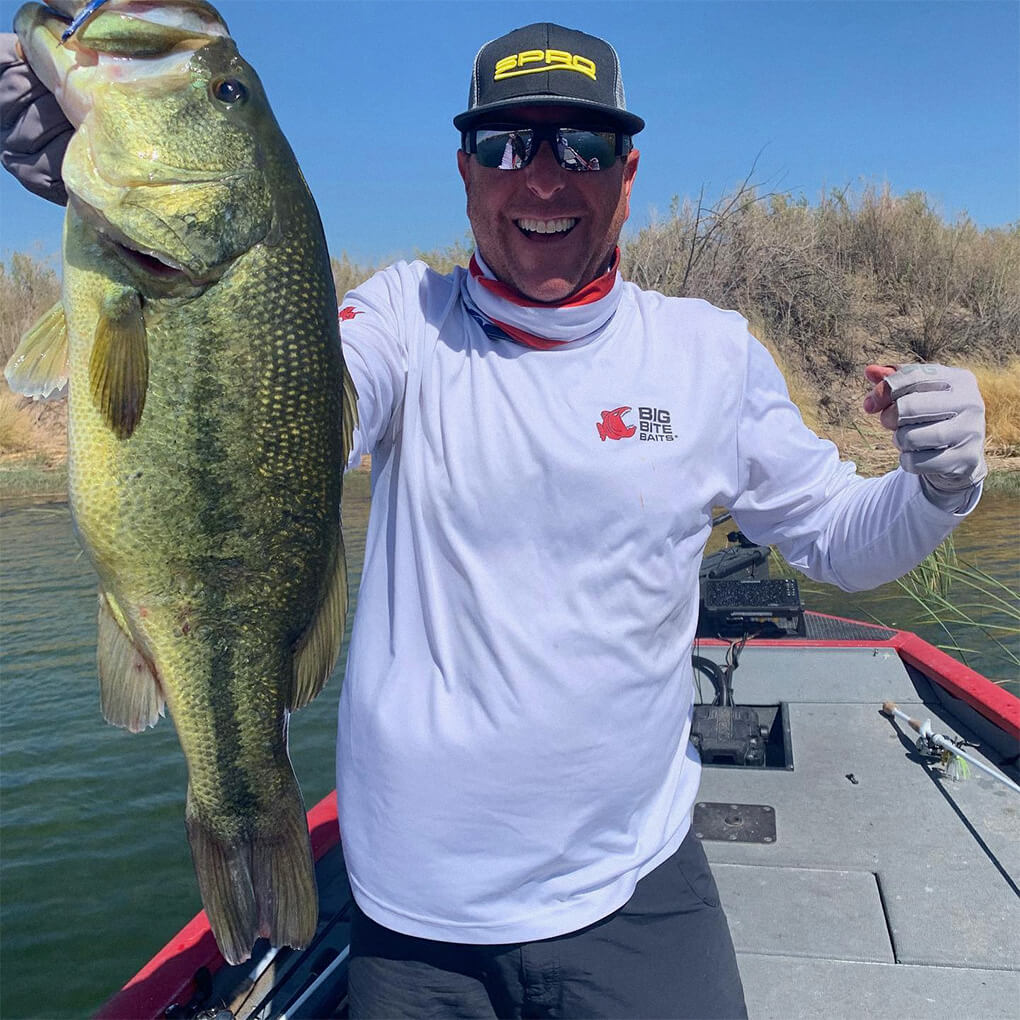
Dean Rojas uses frogs to catch trophy bass such as this fatty (photo courtesy of Dean Rojas)
The Best Time to Fish a Frog
In general, Rojas fishes the artificial frogs anytime the water is warm enough to inspire the real things to be active.
In the northern states such as Minnesota, Wisconsin and New York, there is about a three-month window–from late May on.
But in southern states such as Florida, he will catch bass on a frog year-round.
The best action can even differ throughout a given day.
“In late fall we’ll have cool mornings,” Rojas said. “But from 11 a.m. to 2 p.m., it will warm up and you can have a good frog bite.”
The frog is a well-known summer bait because that’s when weed growth is thickest and the amphibians are most active.
Which lakes are best? It would figure that bodies of water with the best frog populations would offer the best opportunities. But Rojas said, “I don’t care what lake it is, there are always a few sweet spots where the bass will eat a frog.”
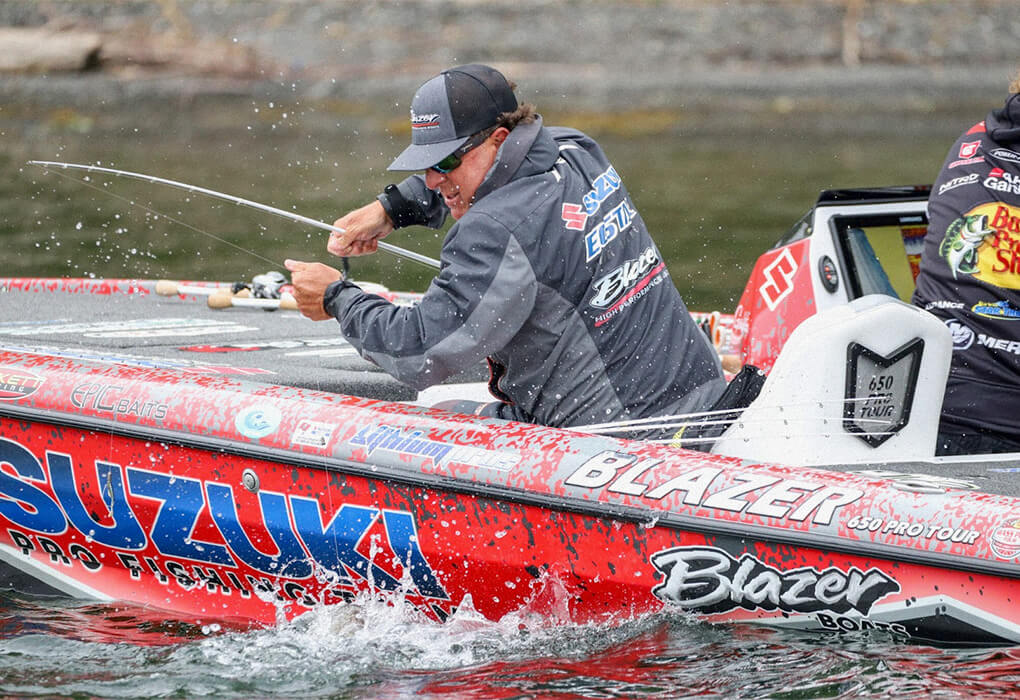
Dean Rojas is accustomed to battling big bass to the boat on the Major League Fishing Bass Pro Tour (photo by Phoenix Moore/Major League Tour)
Equipment
When Rojas fishes thick vegetation, he likes to increase his odds.
That means going to a medium-heavy to heavy baitcasting rod, a reel with a fast gear ratio and 55- to 80-pound test braided line.
“The bass don’t get line-shy,” he said. “They’re looking at the bait, not the line.
“I want something strong enough to pull them out of that thick stuff. I can’t lose them. That’s not an option.”
Rojas has designed a series of frogging rods for SPRO that fits his needs.
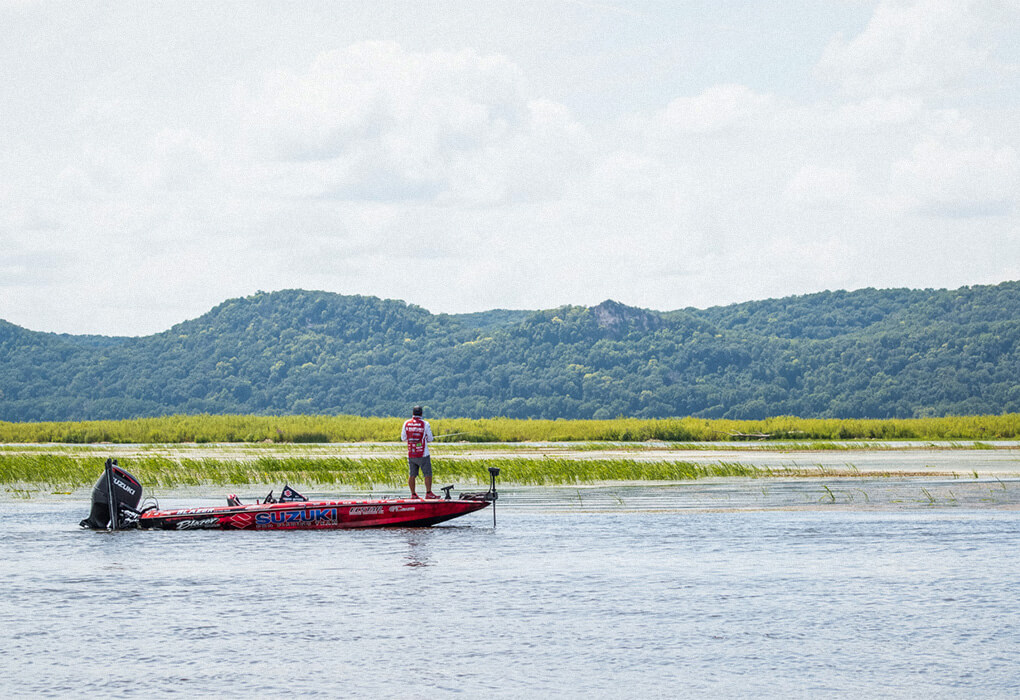
Dean Rojas often starts his search for big bass in shallow, marshy areas (photo by Cobi Pellerito/Major League Fishing)
Tips for Beginners
Rojas advises beginners to think like a frog when they start out.
“Look for shallow, marshy backwaters,” Those areas are the low-hanging fruit of frog fishing,” he said.
“It doesn’t take a rocket scientist to realize that when you pull into an area and hear frogs croaking, you’re in a good spot.”
Vary your retrieve, he said. Some days they want the frog worked slowly. Twitch, twitch, pause.
Other days, they want the bait moving quickly.
Now comes the hard part. When a bass explodes on the lure, resist the urge to immediately set the hook. Make sure the bass has the frog before raring back.
“A lot of bass are lost when we set the hook too quickly and pull the bait away from them,” Rojas said. “We all do it. But if you wait until that bass really has it, you’ll really increase your hookup rate.”
And if you’re having trouble catching them on a frog in a public body of water, try to fish it on a farm pond.
“Those farm-pond fish don’t get a lot of pressure, so they’re usually more aggressive,” Rojas said. “They’ll usually travel farther to hit a frog.”
Conclusion
Rojas is far from being a one-trick angler.
He set the BASS record for heaviest five-fish limit in one day of competition when he landed 45 pounds, 2 ounces of bass in a 2001 tournament on Lake Toho in Florida.
He used plastic baits cast to spawning beds in that event.
Rojas used other baits to win or place high in other tournaments. In other words, he is a well-rounded angler.
But above all else, he is recognized as the king of frog fishing. And he enjoys casting out tips on how others can catch big summer fish on frogs.
The next time out, start by looking for a marshy, backwater area at the back of a cove or creek arm.
Search for spots so gnarly that most anglers wouldn’t even attempt to fish. Launch a few casts and experiment with the speed of your retrieve.
When that first bass crashes through the weeds to blast your bait, you’ll be hooked.

